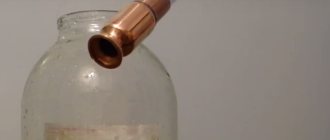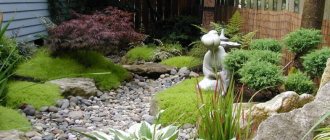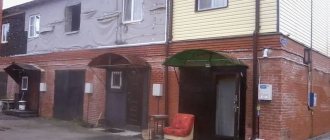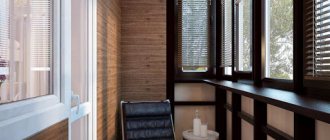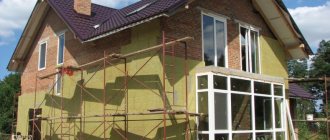Due to frequent complaints about the quality characteristics of modern radios that are built into music centers, it is necessary to use additional external antennas and amplifiers.
In this case, an FM antenna for a music center comes to the rescue, and it is quite possible to make it yourself from scrap materials. The problem of poor signal reception is relevant for remote villages or when traveling.
Therefore, a self-made antenna for fm radio can help the radio operate without failures.
Important! The higher the FM antenna is positioned in relation to the listener, the better the quality of signal reception will be.
What are antennas like?
Depending on the type of receiving radio signal, the antenna can be digital or analog.
- Digital is designed to receive DVB-T2 signals, which transmit data in decimeter waves.
- Analogue is needed to display channels of the same name. Waves of meter length are transmitted, which means that the dimensions during manufacturing are kept appropriate.
Therefore, in order for a TV antenna to work well, you need to know the dimensions for manufacturing.
There are also broadband antennas. The conductors of the design are made of different lengths, which makes it possible to catch both the MV and UHF ranges at once. So, if you need to set up digital and analog TV channels at the same time, then you need to install an all-wave device.
Depending on the location of installation, they are divided into indoor (home, room) and outdoor (outdoor). Homemade digital indoor antennas, and even factory ones, can pick up channels only if the repeater is close. Moreover, the signal must reach the window where the structure receiving the signal is installed.
Outdoor ones are characterized by greater power, therefore they are better for use than indoor ones.
They are divided into individual and collective.
- Individual digital antennas are purchased separately by each resident of the house and installed outside independently or with the help of a specialist installer.
- Collective (or common house) ones are installed on the roof of apartment buildings. Provide signals to all residents at once. You cannot connect yourself and fix possible problems in the future. Maintenance is carried out by specialists from the company that installed the antenna.
The type of action can be:
- passive - they do not amplify the received signal, and the reception itself is ensured due to the design of the on-air receiver;
- active – in addition to reception, the signal is amplified. The receiver has an amplifier board, which is powered by an external power supply or digital set-top box via a coaxial cable.
By the way, if you bought a passive antenna, and the signal level on the TV or set-top box is not the highest, then you can make the design active. To do this, an external amplifier is connected to the cable television line indoors.
What types of antennas are there?
Radio antennas are divided by purpose:
- for home detector receivers and music centers;
- automobile;
- aviation;
- special (satellite communications, military).
Trapping devices vary in range - from ELF (extremely low frequencies) with a wavelength of 10,000 km or more) to HHF (hyperhigh frequencies) with an oscillation size of 0.1-1 mm.
Frequencies used for broadcasting are 148.5 kHz - 108 MHz.
FM radio stations cover 88-108 MHz (ultra-short 3-meter waves).
The following designs are used in everyday life:
- devices with a reversal - aperture antenna;
- products with traveling wave;
- linear devices.
Antennas are classified according to shape and material into:
- telescopic;
- frame;
- pin;
- wire;
- rod;
- foil;
- coaxial.
According to the directional pattern, structures can be narrowly directed and circular. Based on the bandwidth, narrow- and broadband devices are distinguished.
How a digital antenna for a TV works: I’ll explain it simply
Before you start assembling any of the four models of receiving antennas, you should have a good understanding of the processes that should take place in them.
Electromagnetic waves propagate in all directions of the horizon from the electrical signal transmitter generator installed on the television tower.
They have sufficient power for their coverage area, but their signal weakens as distance increases. Its magnitude is also affected by the terrain, various electrical and magnetic obstacles, and the state of the atmosphere.
In a vibrator oriented perpendicular to the movement of the electromagnetic wave, voltage is induced according to the laws of induction. The positive and negative half-waves of the harmonic create their own sign.
The voltage reaches its maximum value - amplitude at points of time corresponding to ¼ and ¾ of the period or 90 and 270 degrees from the sinusoid of electromagnetic wave intensity.
Any shape and size of active vibrators are created for the most effective voltage induction with minimal energy loss. The position of these points is calculated using the wavelength or harmonic frequency.
The voltage, closed to the internal resistance of the television receiver, generates an electric current in the created circuit. Its shape and direction change and proportionally repeat the signals of the transmitter on the active load.
Due to the use of various types of digital modulation on the transmitter side, information signals are received and processed within the television receiver circuit.
I will not go further into considering the question of how a digital antenna for a TV works during its creation.
What technical characteristics of the antenna determine the quality of TV signal reception?
The antenna is classified as a reversible device because it works the same on the transmitter and receiver sides. When analyzing the characteristics, its inclusion is used as a generator.
To effectively receive a digital signal, it is necessary to take into account that on the generator side, the emitter of electromagnetic waves can be positioned at any angle to the horizon, but only two directions are legally accepted: horizontal and vertical.
Our task is to repeat this orientation for our own TV.
The direction of polarization and other digital signal transmission data can be found on the operator’s website through a search engine.
We go to the website and select the required information.
We are primarily interested in 3 characteristics:
- channel number and its frequency, for which we will create an antenna according to strict dimensions;
- the radius of the transmitter service area, which affects the signal quality and the choice of vibrator design;
- direction of polarization.
The distance the TV is located from the transmitting tower greatly affects the design of the antenna.
The higher the antenna is installed, the better the quality of the received signal, but the length of the cable can weaken it significantly. In this regard, residents of the upper floors of multi-story buildings have a significant advantage over their neighbors below.
For a reliable reception zone, I tested the simplest Kharchenko models and loop assemblies made of coaxial cable and wire, which have a wide range of reception frequencies.
For long distances it is better to assemble a wave channel or a log-periodic circuit. Of the simple designs, the Turkin antenna, modified by Polyakov, has proven itself well.
For example, in my area the distance from the TV tower was 25 km, which is within the zone of reliable reception, and the signal frequency is 626 MHz of vertical polarization.
I calculate the length of the electromagnetic wave through the speed of light by frequency: λ=300/626=0.48 meters. The half wave will be 24 cm, and the quarter wave will be 12.
Based on these characteristics, I made 4 test antennas for digital television with my own hands, which I describe below.
Step-by-step instruction
Here are a few instructions for creating antennas, each of which will help you make a really high-quality FM module for receiving radio waves. So, to make such a device, you must adhere to a certain algorithm of actions.
- Take any high frequency coaxial cable. We dismantle its braid and remove the outer insulation. You can also use high-voltage wires from transformers of the same name, which are used in monitors and televisions equipped with a cathode ray tube. They have greater rigidity and will be an excellent option for receiver antennas.
- Now you need to cut a piece measuring 72 or 74 millimeters from the prepared wire. Moreover, accuracy must be maintained down to the millimeter. Using a soldering iron, we solder a small piece of wire to the cable, from which a coil will later be wound from a suitable piece of plastic. The wires will need to be wound about 45 turns. In this case, a piece of internal insulation with a length of 1.8 centimeters will be used. If desired, you can recalculate the coil for a different diameter. But you need to observe 2 points:
- the length of the coil will be 18 millimeters;
- the inductance should be 1.3–1.4 μH.
- Now we carefully wind 45 turns. Once this is done, you can see the gaps on its end sides. You will need to pour a little glue into them to make the structure stronger.
- At the next stage of antenna assembly, you need to put a heat-shrink tube on the resulting structure. It should be heated by some convenient method. But it is best to do this using a closed fire, or you can use a hair dryer.
- If you need a loop antenna, then its special feature is the presence of an aluminum hoop. Its diameter is 77 centimeters, and the internal diameter should measure 17 millimeters. You can easily find such an element in any sports store. You should also have a copper tube on hand. If such an antenna is required, then the central core, braid, and also a small piece of coaxial type wire should be soldered to the contacts of the variable capacitor. We solder the second end of the wire, the central core and the braid to the above-mentioned aluminum hoop. You can also use car clamps, which should be thoroughly cleaned first. Their diameter should be from 1.6 to 2.6 centimeters. You should also do a good cleaning of the contact area.
- The ratio of the circumference of the frame to the circumference of the communication loop should be 1: 5. In addition, 1 centimeter of insulation should be removed from the tip of the cable and from the central core. And also from the middle of the cable for the FM antenna, you should mark 5 millimeters in both directions and remove the external insulation. After this, we remove the cable braid to break it.
- Now you should check the range of the antenna and make sure that the frame has resonance in the range of 5–22 MHz. If the capacitance of the capacitor is different, then these parameters can be changed. If you need low-frequency ranges, then it is better to take a frame with a larger diameter - one or one and a half meters. If we are talking about high frequencies, then a frame of 0.7 meters will be enough. This completes the creation of the loop antenna.
2
A rather interesting option would be a pipe or magnetic antenna. By the way, it can be not only internal, but also external.
The main load-bearing part of such a device will be a heating pipe or water pipe. To make an antenna of this type, you will need to have on hand the following elements:
- a used transformer core that can be removed from some old TV;
- insulating tape;
- glue;
- scotch;
- foil made of thin brass or copper;
- about 150 centimeters of copper wire with a diameter of a quarter square millimeter;
- pins for connection.
First, to wrap the first layer, a core made of ferrite is laid, and on top there are 2 layers of electrical tape, followed by a single layer of foil. Now 25 turns of cable with a 1-centimeter overlap should be wound onto this screen blank so that the contact insulation is the best. And also we should not forget that it is necessary to make mandatory taps on the 7th, 12th and 25th turns. The circuit should be connected to other parts, and the ends of the wire should be inserted into the pins. The tap from the seventh turn should be inserted into the grounding socket, and the other 2 should be connected to the antenna terminals.
The final stage of work will be to set up radio signal reception. In this case, it will be carried out by the usual selection of a winding connection to a connected circuit.
Another fairly common and simple option for creating an antenna of this type is a device made of foil. To create it you will need the following materials:
- wire cutters or pliers;
- knife;
- a roll of foil or copper wire;
- dry board in the form of a square that has a side measuring 15 centimeters.
There is nothing difficult in creating such a device. To make it, you will need to follow several steps.
- First, cut a square out of foil. It should measure 13 centimeters on the outside, and the width of the foil strip should be 1.5 centimeters. A 3mm rectangle should be cut out at the bottom center to allow the frame to open.
- The cut piece of foil should be glued to the board. Now you need to solder the inner rod of the shielded wire on the right and the braid on the left to the square of foil. This must be done with a slight shift to the right from the central slot - about 2.5 millimeters. By the way, the distance between the shielded wire and the braid should be the same. Here it must be said that if the antenna is used to operate in the VHF range, then the size of the square should be increased to 15 centimeters, and the width of the foil strip in this case will be about 18 millimeters.
Important! If you need to amplify the signal for this type of antenna, you can wrap it with a piece of copper wire. Its free end should be led out into the window.
In addition, there is a very simple option for creating a simple radio antenna. We will need to have the following materials and tools on hand:
- soldering iron;
- a plug to connect the antenna to the radio;
- roller blocks that allow you to fix the antenna in the desired position;
- steel wire;
- copper wire;
- switch;
- ceramic insulators.
Everything here will be extremely simple - just connect the wires, plug and rollers with a soldering iron. And the joints will need to be wrapped with electrical tape to strengthen the structure and maintain its integrity. In addition, to make such an antenna look as aesthetically pleasing as possible, it can be installed on a special stand, previously made of wood. As you can see, there are a considerable number of antenna models, each of which can provide a high-quality radio signal in different conditions.
How to make an antenna for a TV
Below are step-by-step instructions to make a DVB-T2 antenna with your own hands. Attached are links to additional detailed instructions where you can learn more and see a more accurate creation algorithm.
From cable
The advantage is ease of manufacture. You don't need to be an experienced electrical engineer. You only need to mark the cable according to the exact dimensions and strip it with a knife. It is also used indoors, but can also be installed outside if the structure is well secured and exposed areas are protected from moisture (rain).
Disadvantage: There is no point in connecting an amplifier. There will be no effect from the device. It only catches a nearby strong signal, which arrives without interference to the antenna.
To make a digital receiver, you need to have:
- a cable of the required length (you can use an old cable from a previous television line if you plan to lay a new one);
- ruler;
- knife;
- plug for connecting to a TV connector.
Quarter-wave vibrator for radio reception
IPhone requires 50 ohm resistance. We'll have to make a quarter-wave vibrator at a frequency from the RK-50 cable. Theoretically, it's impossible, some of the power is lost, but let's try:
- The braid and insulation 37.5 cm long are removed from the RA-50 cable.
- Equip the other end with a docking connector, solder the structure to the required contacts.
Homemade radio antenna is ready! You will make antennas for the FM range and digital television. The cut length of the braid and insulation is determined by the channel frequency. Predominantly no matching device will be needed. To catch radio broadcasts, the wire hangs vertically; TV broadcasting – horizontally. Predetermined by the type of linear polarization of waves.
Location and connection
Speaking about homemade devices, they do not need to be connected to the roof. It is enough to simply attach the “homemade product” to the window (on the wall of the house), pointing it towards the tower.
The TV antenna is connected via a TV cable, attached on one side to the TV, on the other - to the structure itself. Next you need to go to the settings section by clicking on the “auto settings” button.
What factors influence the deterioration of a TV signal?
The reasons for interference in broadcasting may be different. The most common of them:
- distance of the TV from the repeater;
- unsuitable TV antenna;
- a large amount of noise within the antenna radius;
- physical obstacles to signal transmission (high-rise buildings, trees, industrial buildings);
- non-working condition of the cable;
- incorrect orientation of the transmitter;
- metal structures near the antenna;
- signal distribution to several receivers;
- outdated technology.
TV antenna amplifier - what is it?
If you look at it, a TV antenna amplifier is not a very complicated device. This is a simple microcircuit designed for a power supply of six to twelve volts. Sometimes it doesn't even need an internet connection. Question: what causes the signal to be amplified? We will understand this without using complex terms and definitions.
The signal enters the transformer from the antenna and is then sent to the transistor. In a transistor, the TV signal is amplified, and only slightly. Then its path lies through the emitter. Then, using cascade transistors, the frequency is adjusted. This is a simple description of a complex thing at first glance. After this, the signal is sent to the TV.
To enhance or not
The task of the amplifier is to make sure that the level of the television signal passed from the antenna through the cable to the TV receiver becomes sufficient for the tuner to operate. Therefore, it is only necessary when the pulse power is too low.
For it to work correctly, 2 simple conditions are enough:
- presence of signal;
- proper operation of the antenna and cable.
But in the following cases, the amplifier may be harmful:
- The antenna receives a TV signal of sufficient power. Due to the specifics of the DVB-T2 standard, overamplification will lead to “artifacts” (for example, the overlapping of several programs on one another on one channel).
- The antenna receives the TV signal too poorly. To amplify, you need a high-quality original, otherwise the device will not work. There is no point in increasing the noise power.
For proper reception you need a good outdoor (or powerful indoor) antenna. There is no point in purchasing an amplifier for low-power “two sticks” or “wire loops”.
Is it possible to receive a digital signal without an amplifier?
The question often arises and interests many people.
Important! With the proper approach, it is possible to receive a TV signal with normal quality, not only without an amplifying device. At a distance of up to fifteen kilometers from the repeater, it is possible to view the TV receiver even if you do not use an antenna. The antenna can be replaced with a short piece of wire. Coaxial cable is best for this.
Coaxial cable to the rescue
A weak and poor-quality signal often becomes the reason for refusing to use the radio in such areas.
You can solve the problem using a coaxial cable. To work you will need:
- wooden slats;
- television cable (about one and a half meters);
- plastic tube (diameter 2 cm, length 1.5 m).
- How to fix a laptop that won't charge
- Insulated dielectric screwdrivers up to 1000V - tips on how to choose the best manufacturer
Dielectric insulated tool for work - which one is better to choose? Review of manufacturers, photos + video
The process of creating a device is quite simple. First you need to make a cut on the insulating layer.
This must be done carefully, trying not to damage the braid. Then the exposed braid is slightly kneaded, and the foil screen is turned towards the incision site.
At the last stage, you need to secure the prepared cable well inside the plastic tube and mount it on the rail. You need to move the homemade structure up and down in order to search for a wave; rotating around its axis will not bring results.
Antennas for receiving signals in the FM range can be purchased in specialized stores. The choice of models is quite large.
You can save a little and try to design the device yourself. Having even a little experience, using the right circuits, you can count on a good result - a homemade antenna will give high-quality and loud sound.
Features and circuit of the antenna amplifier
An amplifier is a device designed to amplify a poor, unstable TV antenna signal. The advantages of this device are as follows:
- amplification of a television signal in a fairly wide frequency band;
- the ability to receive even a very weak TV signal;
- quiet operation
The disadvantages include:
- the risk that the device will self-excite;
- High power signals in the meter wave range may overload the device;
- susceptibility to the effects of lightning currents;
- passive output losses.
The DIY antenna amplifier diagrams indicate how the device should be connected to the TV. The TV cable goes to a device that amplifies the signal, and then the signal goes to the TV. This scheme is universal.
Antennas for a radio station: general manufacturing principles and instructions
If the receiver does not work fully with the existing built-in antenna, then a homemade indoor radio antenna that amplifies the signal can be the solution. The device is placed at the maximum height to avoid possible interference with operation.
Before you make your own antenna for a car radio or other equipment, you need to take into account an important fact: to receive a radio wave, its polarization is important. Devices for FM signals should be positioned vertically, following the type of wave itself.
A do-it-yourself FM radio antenna is quick and easy to make if you prepare all the necessary tools and parts in advance. The simplest option is a pin one. To do this, take any material that conducts current and install it vertically. The lower part is connected to the receiver.
The amplifier allows you to receive even the weakest signal When creating an antenna, you should strive to ensure silent operation
The principle of operation of a TV antenna
Intermittent broadcasting distorts the picture and sound, but the problem is not always on the side of the television tower. The problem most often lies in the receiving device. You can try to amplify a weak signal to avoid noise and interference during viewing. Let's consider both types:
- Satellite dish - the gain depends on how wide the dish is in diameter. There are several varieties, all of them outdoor.
- Television can be indoor or outdoor (these are installed on the roofs of houses).
The quality of the signal in the second case depends on the proximity of the broadcast tower, the design and the presence of an amplifier. In other words, the antenna receives it, converts it through the receiver, and the image appears on the TV screen.
IMPORTANT! The quality of the signal does not depend on the type of television cable (if it is damaged, there will be no sound or picture at all). Therefore, if you have problems with broadcast reception, you should check the antenna.
Features of radio wave propagation
Ultrashort waves with frequency modulation (FM) do not bend around obstacles larger than several meters in size. The earth's ionosphere is transparent to them. Therefore, it is believed that VHF propagates only within the line of sight. Indoors, the radio receiver in most cases picks up a signal repeatedly reflected from different objects.
The quality of information transmission is affected by precipitation in the form of snow and rain, as well as sources of electromagnetic interference:
- distribution substations;
- power lines;
- large vehicles operating near the house.
For example, a monotonous low-frequency sound in a radio is a consequence of the operation of a nearby alternating current generator.
The range of wave propagation depends on the power of the radio station.
When radio waves are reflected from obstacles, they mutually enhance when added in phase or weaken each other when added in antiphase. In addition, if there is in-phase re-reflection from the earth’s surface, then areas with the maximum signal level are formed - Fresnel zones.
The pattern of wave distribution for the selected location determines the radiation pattern of the antenna, which is needed to ensure high-quality reception.
How to choose a signal amplifier for your TV
The modern market presents many different models, for this reason, many people find it difficult to decide which device suits them best. To make the right choice, you should consider several important parameters:
- Gain. It should be calculated based on the approximate distance between the TV and the signal source (tower). It should not exceed 150 km. At a distance of no more than 10 km, there is no need to amplify the signal; you just need to choose a suitable antenna. If the distance between your home and the source is more than 10 km, you should not purchase a device with a coefficient higher than necessary - this will lead to the opposite effect and instead of a high-quality image you will see new interference.
- Antenna type. For example, swa models are suitable for array receivers, which operate in the frequency range from 49 to 790 MHz. Some of the most popular modern Locus models are perfectly compatible with LSA amplifiers.
- Frequency range. A good solution for a conventional outdoor receiver (which receives waves of any frequency) would be to install a broadband model, but a better result is shown by a device that operates only in a certain range.
- Noise figure. The lower this parameter, the better the image on the TV screen will be.
The best models and brands
Among radio antennas there are models that have received recognition from car enthusiasts. The rating is based on the technical characteristics of the models and user reviews.
Automania Digital TV FM
Such an antenna can often be found on a minibus or city bus. A small plastic device weighing 99 g is secured to the windshield with double-sided tape. Wing-like coils of wire radiate from it, increasing the quality of reception. The plastic case on glass gets very hot from the sun's rays, but the performance of the device does not suffer. It can withstand temperatures of -45…+85°C.
The amplifier increases the power of a weak signal by 20 dB. The device receives, in addition to radio signals, television signals, but only within the city. The range of UHF signals picked up is 470-860 MHz, also works in VHF. The active antenna is connected to the vehicle's on-board network via a separate wire. Radio cable length 1.5 m.
Bosch Autofun
The minimum size antenna is a 15 mm thick housing. Installed in the upper corner of the windshield to the right of the driver. 2 antennae extend from the device, which are laid next to the counter and the upper edge of the window. The device does not interfere with the view. When installing, you do not need to immediately glue it; you must first determine how to place the device to ensure maximum sensitivity. It is influenced by metal parts and body shape.
Delta Bosch 23799
Passive in-cabin antenna with long reception range. Frequency range: long, medium, short, ultra-short. The reception range limit is 160 km (except VHF). Gain: 34 dB. Provides a clean signal without noise or interference.
Falcon ANT 100
The device with a 2.9 m cable can be placed on the rear window. A microcircuit is installed for processing high-frequency signals, which allows you to listen to the radio outside the city. Receives AM/FM waves. The design provides voltage stabilization. Self-installation can be difficult: there is no connection diagram.
Antey 914
Operates in the GSM band at frequencies 900-1800 MHz. The antenna is designed primarily for reliable operation of the phone; distortion appears outside these frequencies. Provides signal amplification by 3.5 times.
When purchasing, pay attention to the type of connector, choosing the appropriate one, so that you don’t have to look for an adapter later. At the base of the device there is a magnet for installation
According to the manufacturer, the wind resistance of the mount is 150 km/h. It is difficult to find an installation in stores; it is easier via the Internet.
Hyundai H CA3200
Designed to receive all radio waves except the HF range. An active type of antenna that can be easily and quickly installed inside the cabin. High-frequency signals are processed by a built-in microcircuit, the gain is 26 dB. The device is short circuit protected.
How to strengthen a TV antenna yourself
There are three simple ways to boost your signal yourself. They do not require large expenses or specialized knowledge:
- Use an amplifier - you can purchase it in a store and install it yourself.
- Use connected devices - they will give the best signal. It is best to place them as high as possible.
- Expand reception coverage - as with a plate, diameter matters. You can supplement a conventional antenna with thin wire, making a housing around it with segments similar to the type of rays.
The antenna can simply be moved by finding the optimal place to receive the signal. Such amplification methods are universal and, quite likely, they will be enough to improve the picture on the TV screen.
Recommendations
If we talk about recommendations for the creation and use of such antennas, then first of all we should note several.
- There should not be any metallic foreign objects near such a device. Otherwise, they may interfere with the reception of the signal or reflect it, which will also negatively affect the quality of its reception.
- Care should be taken to protect the antenna from exposure to natural factors. Otherwise, its parts may rust and sooner or later the device will simply fail.
- In most cases, it is necessary to make drawings before starting work, where you need to describe in detail the dimensions and dimensions of the device, its type, as well as the algorithm of actions for its creation. This will make it possible to quickly and accurately implement one or another idea and obtain a high-quality antenna for receiving a stable FM signal.
How to make a radio antenna with your own hands in 15 minutes, see below.
Signal amplification methods
TV antenna signal amplification is achieved in 5 ways:
- Use a higher quality TV antenna than the one you have. Depending on the design, a few decibels of gain can be gained here. Check if your antenna is selected correctly.
- Precise orientation. Almost all devices operating in the UHF range have a clearly oriented diagram and most efficiently receive a signal from one direction. Even a rotation of 5–10 degrees can give a serious increase in signal strength.
- Replace cable. If the distance between the antenna and the television receiver is too large, the lion's share of the received signal power is lost due to the resistance of the conductor. This can be avoided by using a feeder with reduced resistance (for example, with a central core made of pure copper rather than copper-plated steel).
- Move the TV closer to the antenna. The cable becomes shorter: in some cases, even 2–3 meters can be decisive. Reducing the feeder length allows you to avoid unnecessary signal power losses.
- Use an antenna amplifier.
Operating principle
The radio signal arriving at the FM antenna is amplified, received or transmitted.
The operating principle of the device can be explained in more detail as follows:
- Radio waves in the form of an alternating electromagnetic field arrive at the antenna.
- It produces in response multidirectional currents that appear due to the reception of radio waves.
- Coincidences of frequencies and currents appear - the frequency of the radiation of the transmitter with an alternating field, the current at the receiver with the current at the transmitter.
- If the wavelength is a multiple of the antenna dimensions, a resonance appears at the receiver frequencies, which amplifies the signal, significantly improving it.
We recommend reading: How to calculate the resistance of a resistor to reduce current
On a note! Strict compliance with the antenna height and wavelength is necessary - this not only improves the signal, but allows you to accurately calculate the reception frequency.
Making a digital signal amplifier: materials, tools, circuits
Any novice radio amateur who has just learned to hold a soldering iron can make an antenna amplifier for receiving digital television. The main thing is to choose the scheme you like from the many that can be found on the Internet. You will need a minimum of tools - a soldering iron, a cutter and pliers. Well, all the necessary material, such as circuit elements, wires and other consumables, can be purchased at any radio electronics store or even ordered online.
Connecting and setting up an antenna amplifier to a TV: how to do it
If the circuit is assembled correctly and the elements are correctly selected, there is no question of any adjustment. A cable TV signal amplifier between a splitter (diplexer, splitter, tee - whichever is more convenient) and a TV. If you need to supply power to it, you should consider having a source nearby. Moreover, if power is supplied to the device, then, if desired, such an active antenna can easily be turned into a passive one by simply unplugging the unit from the outlet.
Let's start remodeling
Amplifiers from array-type antennas have a balun transformer, and we will need it to match the antenna with the signal consumer. In the photo below, the transformer is circled in yellow. (A similar modification can also be made in amplifiers for other types of antennas)
Matching transformer on the antenna amplifier board
There is no need to solder it, everything is much simpler. On the amplifier board, on the side of the radio elements, you need to remove the excess. Namely, unsolder the capacitor at the output of the transformer (marked with a red dot) and unsolder the strapping elements in the terminal circuit to which the central core of the cable is connected (marked in orange)
Attention! In amplifiers with other numbers, the number of elements and their location may differ, but the meaning remains the same, disconnect the transformer and terminal from the amplifier circuit.
Antenna amplifier with items marked for removal
This is how I did it! (Photo below) Of course, I washed all the soldering points with alcohol..... well, how did I wash it? — Rubbed with a thin layer, you know))) Although this is not necessary.
Amplifier with elements already removed
Final stage - Using a short wire, you need to connect the free output of the transformer to the terminal for the central core of the cable. That's it, the approval board is ready! You can install and try. And yes! Don't forget to use a regular TV plug instead of the power supply. The one with the separator from the power supply will not work.
Amplifier converted into a matching board
That's all! Found it useful? Share with friends, social media buttons below, this will help the development of the site. Thank you!
Two types of TV antennas: active and passive. How do they work, and which one is better for digital television? Read the advantages and disadvantages of each type of antenna in this article.
No, we will not write about how to point an antenna for strategic bombing, as you might think from the picture.

